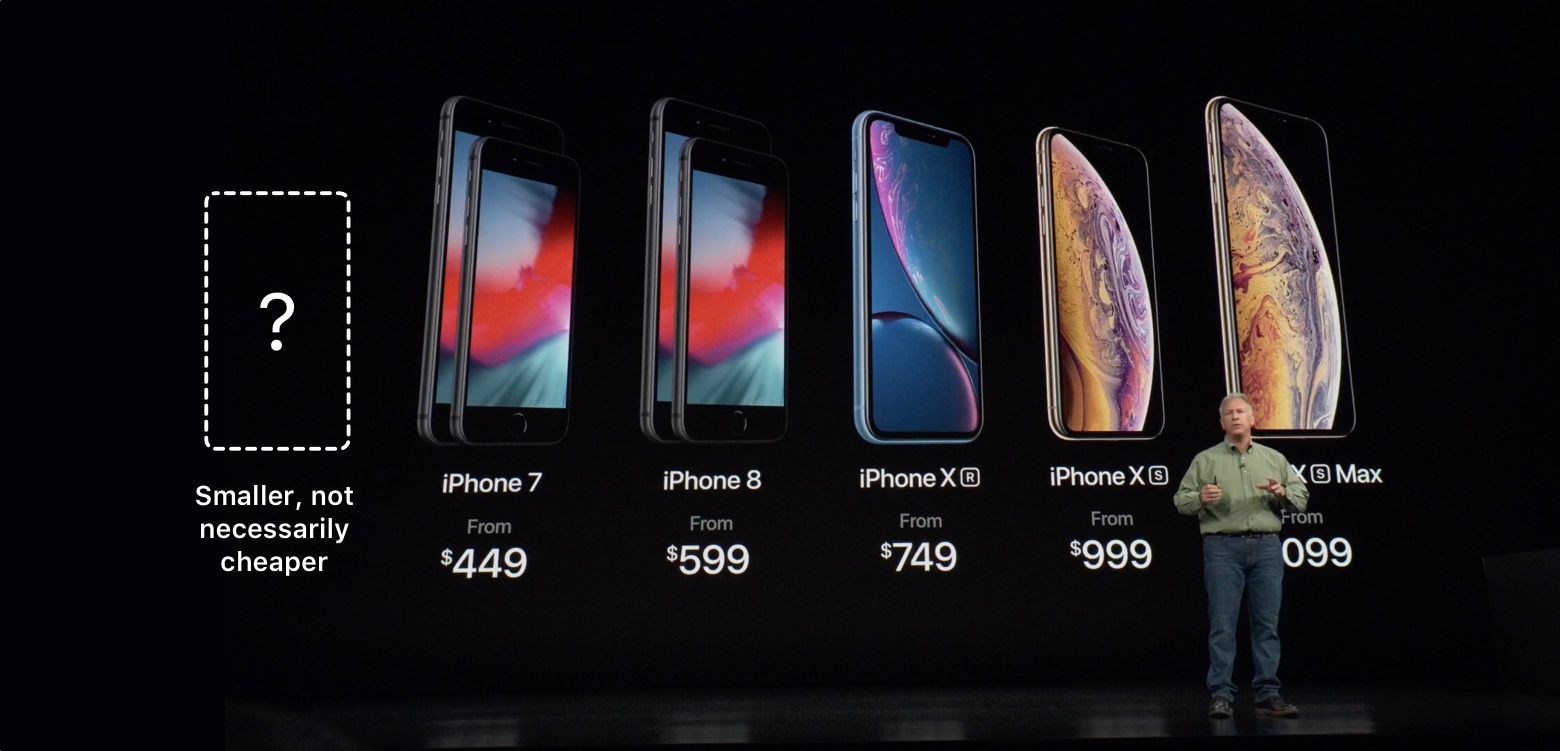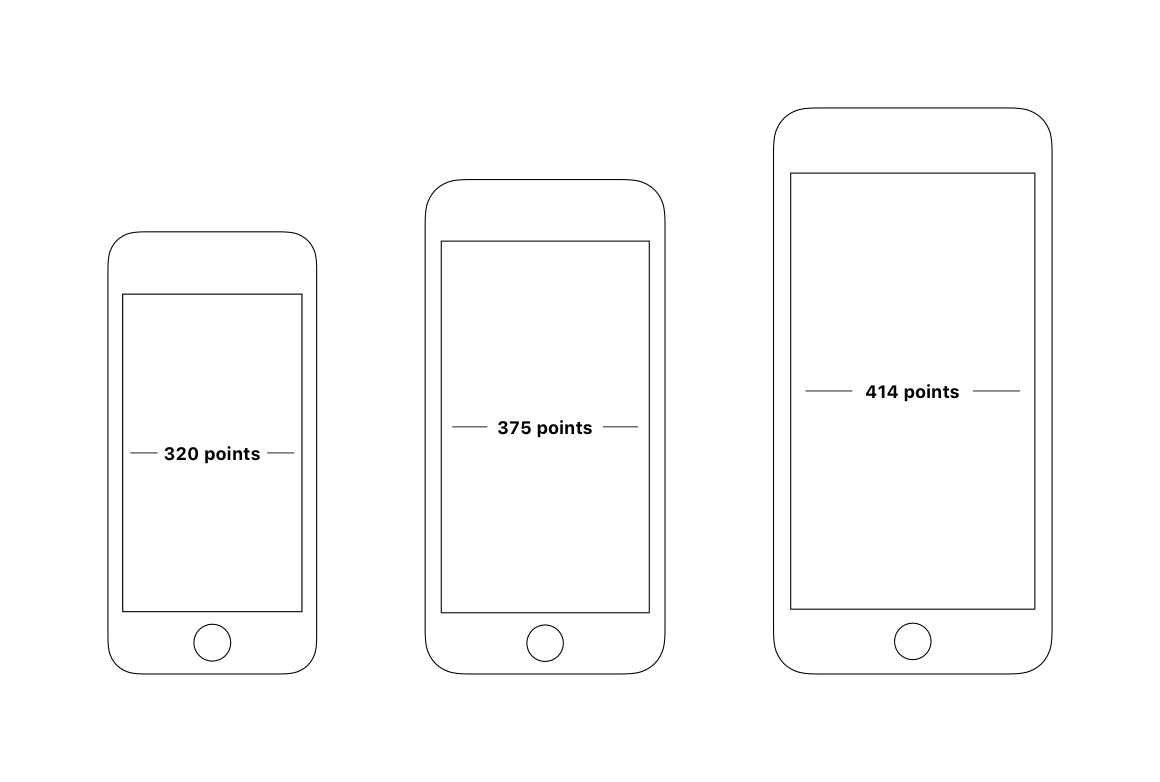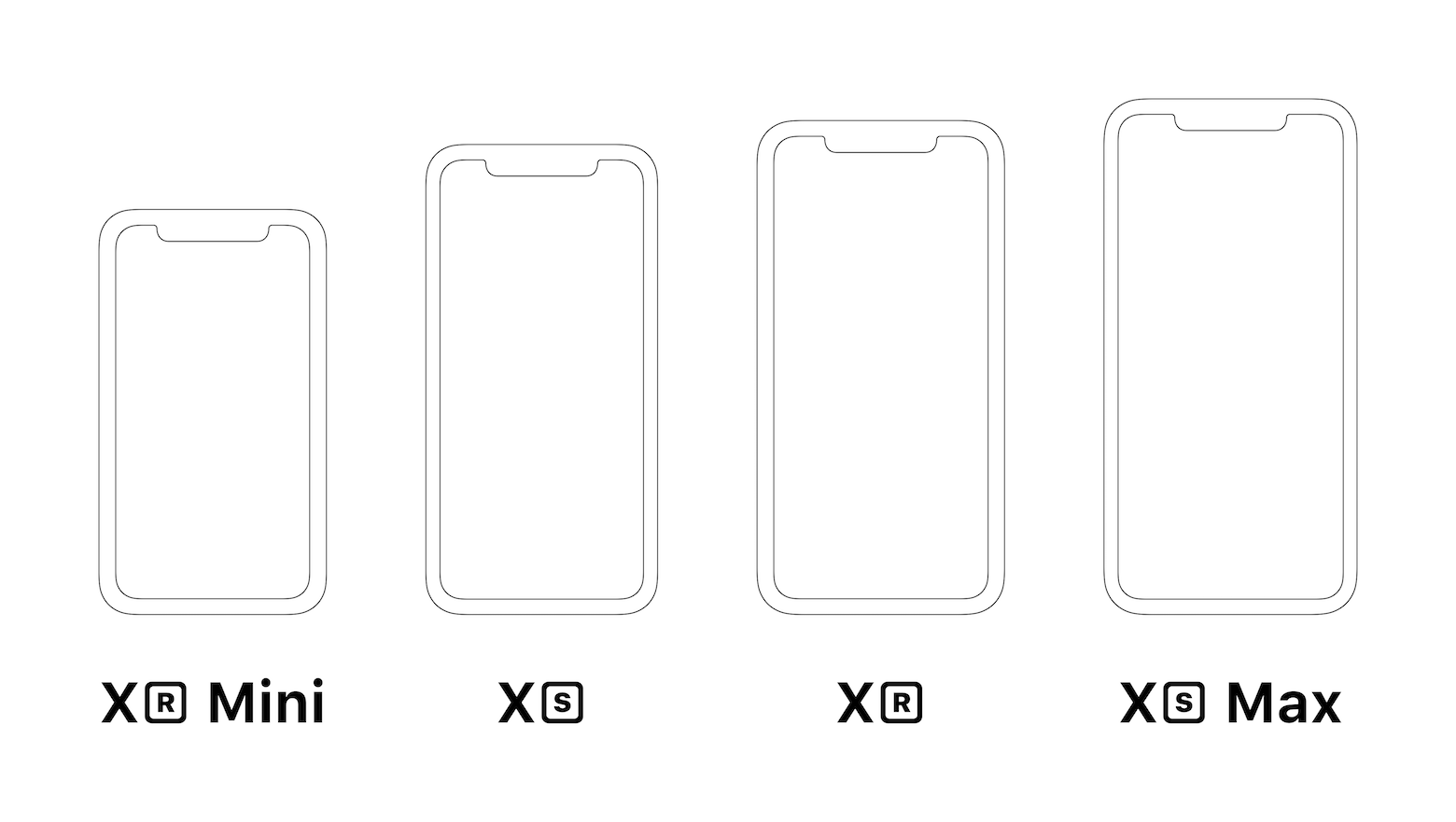Predicting iPhone XR Mini
By Jeff GrossmanLast week Apple announced iPhone XS, iPhone XS Max, and iPhone XR. They also quietly discontinued iPhone X, iPhone 6s, and most notably, iPhone SE. The smallest phones in Apple’s product lineup are now iPhone 7 and iPhone 8, each with a 4.7” screen, and iPhone X and iPhone XS are only slightly larger even though they each have a 5.8” screen. Phones with large screens are clearly popular, but there’s also a segment of the market that wants a smaller phone, which is now no longer an option in the iPhone lineup.

I don’t know if Apple is ever planning on making a modern replacement for iPhone SE (i.e., a smaller iPhone with a notch and no home button), but if they are going to make such a phone, I think I can do a good job predicting what it will look like because Apple is often a pretty predictable company.
If you don’t care to read my long explanation for deriving the final specs, feel free to jump to the bottom to read the final results.
iPhone SE + Successor
iPhone SE was introduced with the latest generation processor and camera combined with an older screen, lack of 3D Touch, older case design, and slower first-generation Touch ID. It didn’t use top-of-the-line components across the board, and I see no reason why its theoretical replacement would either. For that reason, I would assume that this phone would use at least some cheaper components than iPhone XS and iPhone XS Max do — like iPhone XR does. So, I’ve decided to call this theoretical phone “iPhone XR Mini,” even though Apple product marketing names are often hard to guess and I will likely be wrong.
Determining the size of iPhone XR Mini is all about figuring out the screen size, which is simply derived from the screen resolution and pixel density. Modern iPhone devices are essentially just a screen with a thin, uniform bezel (~4-5mm) around all sides, so if I can figure out the screen specs, I can easily determine the overall size of the device.
Since this product will not be a flagship, it’s important to recognize that if Apple is going to make it, they are going to want to make it easy to design, support (in iOS), and most importantly, manufacture. They aren’t going to invent lots of new technologies and manufacturing processes for this product (unlike what I’m sure they did when creating iPhone X).
Screen Size & Pixel Density
It is obvious that this device will need a screen larger than 4.0” (iPhone SE) and smaller than 5.8” (iPhone X). I also think it’s a safe bet that it will use a 2x screen — if iPhone XR is using a 2x screen, then a considerably smaller iPhone won’t use a 3x screen. All iPhone devices that Apple has ever made that have a 2x screen, from iPhone 4 to iPhone XR, are 326ppi, and Apple will not change this with iPhone XR Mini. Having a consistent pixel density for screens helps considerably with manufacturing, and Apple is not going to make a change for this phone.
Screen Width
Every iPhone has used one of three widths for screen resolution: 320 points, 375 points, or 414 points. Apple will pick from one of these for iPhone XR Mini — they aren’t going to start using a new screen width for this product.

Since this is a smaller phone, 414 points is way too large to consider. iPhone SE was 320 points, and it’s a possible candidate for iPhone XR Mini, but I really believe they would prefer to use a screen width of 375 points. No phone in the current lineup has a 320 point width, and having to re-introduce it and continue supporting it in software could introduce unnecessary friction into iOS software design process. Therefore, I believe Apple will use a 375 point width.
Screen Height & Aspect Ratio
Now that our iPhone XR Mini has a screen width and pixel density, the only remaining screen characteristic is height. Again, we can look to previous Apple patterns for clues. All iPhone devices have used just one of three aspect ratios (height : width) — 3:2 (1.5), 16:9 (~1.77), and 19.5:9 (~2.16). The original iPhone through iPhone 4s all have an aspect ratio of 3:2, but that hasn’t been used since and is unlikely to be returning for any new product. iPhone 5, iPhone 6, iPhone 6 Plus and their equivalent size successors all have an aspect ratio of 16:9, while all modern iPhone devices (those with a notch) have an aspect ratio of 19.5:9.
If you do the math using an aspect ratio of 19.5:9, you end up with the same resolution in points as iPhone X with a 5.4” screen size — almost the same size as the 5.8” screen on iPhone X. We’re trying to create a smaller iPhone, and this wouldn’t be small enough to be worth producing.
The obvious candidate is to use an aspect ratio of 16:9, which would give a screen resolution of 375 × 667 points at 2x, or 750 × 1334 pixels, with our previously determined density of 326ppi. If that sounds familiar, it’s because it’s exactly the same screen resolution and pixel density used in iPhone 8, meaning it’s the same 4.7” screen that Apple has used in hundreds of millions of phones (going back to iPhone 6).
This screen is a very plausible candidate for iPhone XR Mini, since Apple has 4+ years of experience producing them. Accounting for ~5mm bezels on all four sides of the screen, the resulting device would be approximately 69.6mm × 114.7mm. iPhone SE was 58.6mm × 123.8mm, making this iPhone XR Mini candidate ~18% wider and ~8% shorter than iPhone SE. It is certainly a possibility, but when I mock up a design with these specs, it just feels a bit wrong, reminding me of the 3rd generation “fatty” iPod nano:

An Improvement?
So how do I fix this? One thing I didn’t account for yet in my design is the space that the notch and home indicator take up — Apple calls these the safe areas. iPhone SE has a top safe area of just 20 points (for the status bar), and no bottom safe area (0 points). iPhone X, iPhone XS, iPhone XS Max, and iPhone XR all have a top safe area of 44 points (for the notch) and a bottom safe area of 34 points (for the home indicator). This means that all modern iPhone devices have a safe area that is 58 points (44 + 34 - 20) taller than non-modern iPhone devices.
Adding this extra 58 points of height to the previous candidate creates a screen that is 375 × 725 points, or 750 × 1450 pixels. At 326ppi, the resulting screen would be 5.0”, and accounting for the device bezels, this improved iPhone XR Mini design would be approximately 69.6mm × 123.8mm. This would result in a phone ~18% wider and exactly the same height as iPhone SE (down to the tenth of a millimeter), and is what I believe iPhone XR Mini will be.
The only thing that gives me slight pause is that this introduces a new aspect ratio of 5.8:3 (~1.93) for Apple and developers to support. But between the constraints of pixel density, screen width, and screen height, I believe the latter is the easiest for Apple to be willing to change. This feels like the only compromise that I’m making, and I’m OK with that. If Apple feels otherwise, perhaps we might see a “fatty” iPhone XR Mini instead.
Final iPhone XR Mini Specs
In summary, I see iPhone XR Mini as a small, modern iPhone that is a bit wider than iPhone SE, exactly the same height, and with a screen that is larger than the screen in iPhone 8 (although effectively the exact same usable size due to the notch and home indicator). It makes sense for both Apple and its customers.
Here’s how iPhone XR Mini looks in the current iPhone lineup (with iPhone SE also included for size comparison):

These are the final specs comparing iPhone XR Mini against the current modern iPhone devices, along with an additional set of device mockups removing the “legacy” phones (those with a home button and without a notch):
| iPhone XR Mini | iPhone XS | iPhone XR | iPhone XS Max | |
|---|---|---|---|---|
| Screen Resolution | 375 × 725 points 750 × 1450 pixels |
375 × 812 points 1125 × 2436 pixels |
414 × 896 points 828 × 1792 pixels |
414 × 896 points 1242 × 2688 pixels |
| Pixel Density | 326ppi (@2x) | 458ppi (@3x) | 326ppi (@2x) | 458ppi (@3x) |
| Screen Size | 5.0” | 5.8” | 6.1” | 6.5” |
| Device Dimensions | 69.6mm × 123.8mm | 70.9mm × 143.6mm | 75.7mm × 150.9mm | 77.4mm × 157.5mm |
| Device Area | 86.16cm2 | 101.8cm2 | 114.2cm2 | 121.9cm2 |

I personally think iPhone XR Mini fits very nicely into this family and hope that Apple is actually working on it. I’d love to see them release it in Spring 2019 — three years after they released iPhone SE.